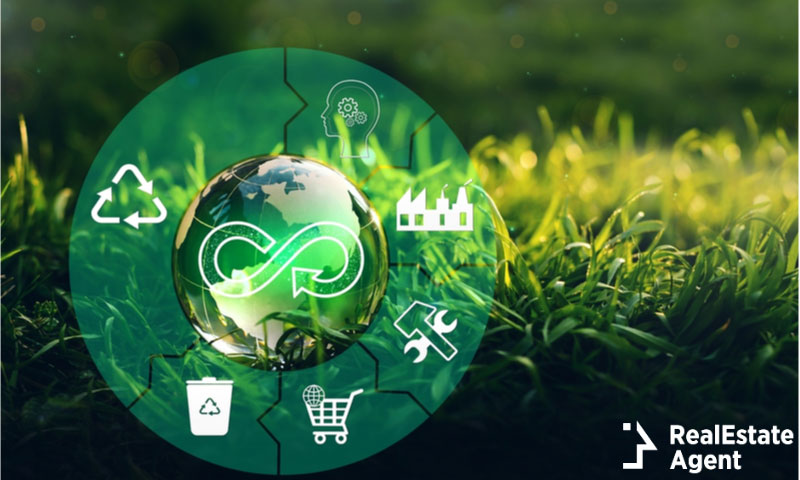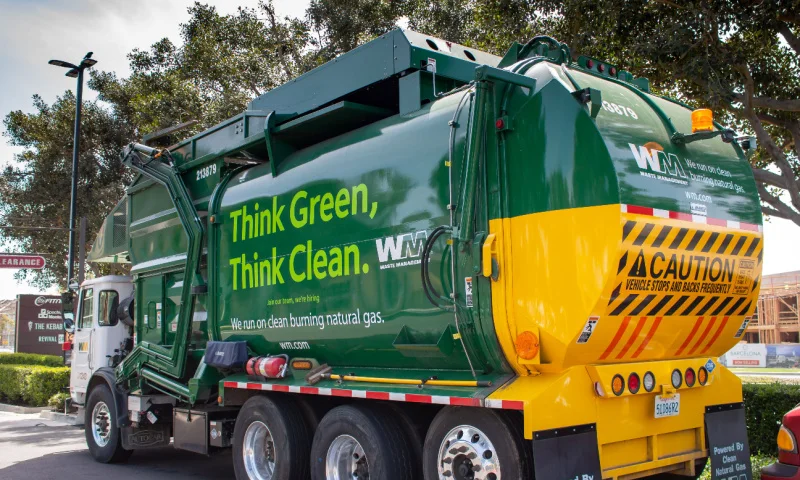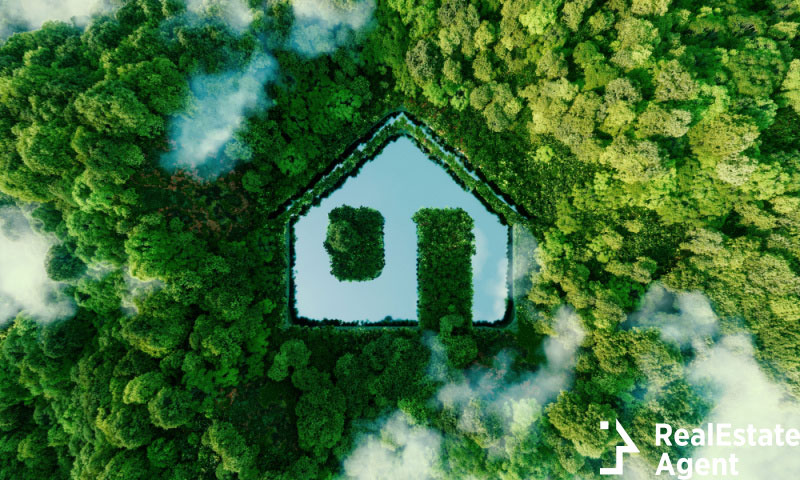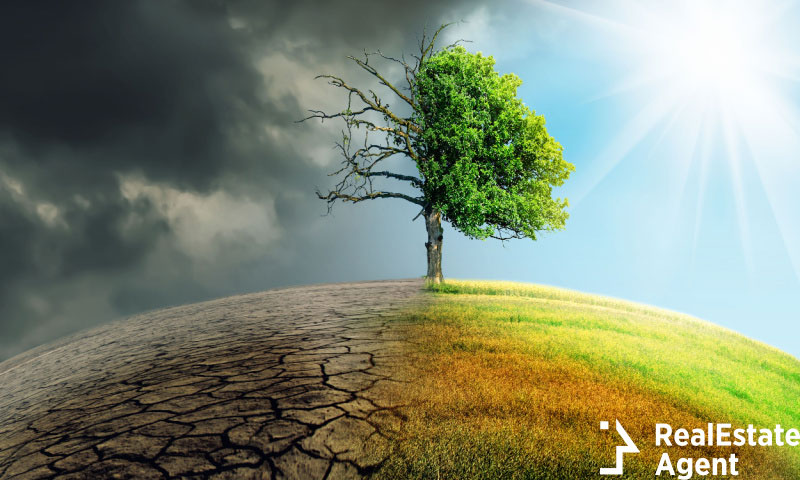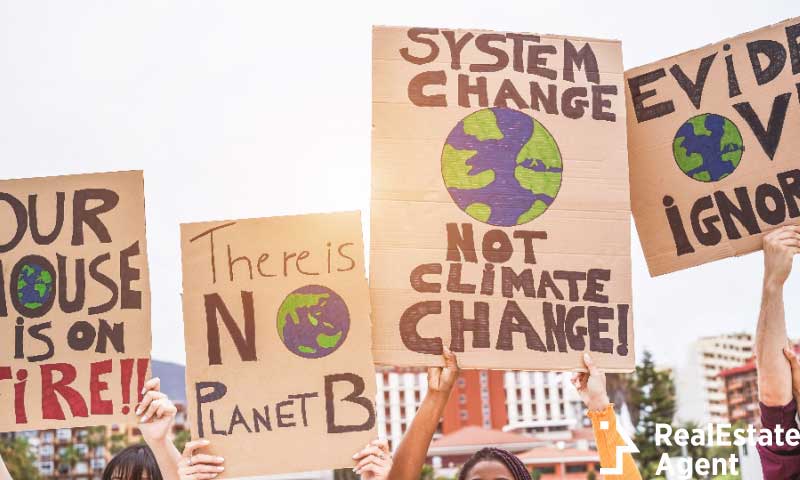We have experienced a troubled economy for the last few years. This partly happened due to the COVID pandemic, but the supply chains were also affected, which only worsened things. Nowadays, Eastern Europe is going through a war that results in the loss of human life but is also a severe problem for the world’s economy. Seeing as the global economy depends on proficient trade between nations worldwide, having some countries unable to participate in that global economy has dramatic effects.
However, the global economy wasn’t in good shape even before 2019. Still, like many other man-made things, we chose to overlook the side effects of an economy that benefits the few at the expense of the many. We will not get into class discrepancies even if studies show a balanced wealth distribution would be more sustainable. Still, this article intends to tackle the concept of a circular economy, so we’ll focus on that.
Firstly, let’s understand what our current linear economy looks like and how it can be defined. Then we’ll get into why everyone should switch to a circular economy with examples of how it can be introduced, applied, and used and how it is already being used successfully.
Summary:
- What is Linear Economy?
- What is a Circular Economy?
- What are the Three Principles of Circular Economy?
- Is Circular Economy Sustainable?
- Environmental Benefits of the Circular Economy Model
- Economic Benefits of the Circular Economy Model
- Business Benefits of the Circular Economy Model
What is Linear Economy?
Our modern society learned over the years to apply linear economy. There’s no point going into capitalism, socialism, or feudalism as they all use linear economy. So what is this linear economy? Just imagine an economy that goes in one direction and one direction alone. It’s a straight line from production to the end of the product’s life. A linear economy follows a step-by-step plan, also known as the take-make-use-dispose plan.
Through linear economy, raw materials are collected in part through mining industries, the manufacturers take those materials and create the products they sell, those products get into the hands of consumers. Once the products are used and are no longer necessary for the consumer, they are disposed of as waste. This system creates value by producing and selling as much as possible.
What’s the Issue with Linear Economy?
That is where the problem starts. If value results from creating and selling as many products as possible, manufacturers aren’t motivated to develop high-quality products. If a product lasts more, the consumer will not buy as often. So this results in poor-quality products that require replacements more often and require increased production for increasing demand. But the waste is also increased, and that’s the poison of this diseased system.
Waste from this linear economy ends up in landfills. Now, there will be those that say that recycling is the answer. IT IS NOT. A tiny percentage of what is manufactured can be recycled, and an even smaller percentage actually is recycled. Recycling is not an option, and waste management concepts make sure to explain that.
Additionally, waste management responsibilities are often placed on the consumers’ shoulders. Seeing as they bought the product and are the ones using the products, they should be in charge of managing the waste resulting from the product. This is wrong because, in general, consumers don’t have the tools to manage waste, and municipalities are barely implementing the facilities necessary to actually manage waste. So consumers are left with waste that they can not recycle. Their only option is to dispose of it, which results in landfills overflowing with waste from things like the fast fashion industry.
What is a Circular Economy?
If we want to understand the circular economy definition, we must go back to that take-make-use-dispose plan used in a linear economy. We already understand how raw resources are used in the linear economy to manufacture products, which are used by consumers and then disposed of. On the other hand, the circular economy aims to fix this issue by looking at the natural world and the cycles present in natural ecosystems.
If you’ve recently seen the movie “The Lion King” you probably are familiar with “the circle of life”. The concept of the circle of life in nature means that everything is food for something else. We can see this in lions and antelopes, but also in dead leaves that fall from the tree, reaching the ground and providing nutrients for small animals and the forest. The trees use these nutrients to grow, and the cycle starts again. Similarly, when animals die, even if other animals eat them, their remains also feed the ground with nutrients.
The circular economy aims to apply this natural life cycle to our economy. This means that it needs to find a way to eliminate waste. We can do this through composting biodegradable waste, reusing, remanufacturing, and recycling non-biodegradable waste. It also requires a severe cut down on the number of chemicals used in our products and investing in renewable energy.
Other Versions of the Circular Economy Definition
The first circular economy definition that we’ll go over is the one provided by the World Economic Forum. According to this global institution, “a circular economy is an industrial system that is restorative or regenerative by intention and design. It replaces the end-of-life concept with restoration, shifts towards the use of renewable energy, eliminates the use of toxic chemicals, which impair reuse and return to the biosphere, and aims to eliminate waste through the superior design of materials, products, systems, and business models.”
This economic shift is necessary for our modern society as we can see the immense negative impact our modern lifestyle has on the environment. By implementing the circular economy, we can take care of this problem by taking responsibility from the consumers and shifting it towards the manufacturers. After all, it’s the manufacturers that decide what materials they use. If they are required to deal with the waste resulting from their products, they will need to turn toward more environmentally friendly materials.
The Ellen MacArthur Foundation provides another circular economy definition. This charity is committed to implementing a circular economy in order to eliminate waste and pollution. Their circular economy definition “(looks) beyond the current take-make-dispose extractive industrial model, (as) a circular economy aims to redefine growth, focusing on positive society-wide benefits. It entails gradually decoupling economic activity from consuming finite resources and designing waste out of the system. Underpinned by a transition to renewable energy sources, the circular model builds economic, natural, and social capital. It is based on three principles: designing out waste and pollution; keeping products and materials in use; regenerating natural systems.”
What are the Three Principles of Circular Economy?
As the Ellen MacArthur Foundation brings our attention to the three principles of circular economy, we’ll take it a step further. In order to help readers understand what the circular economy principles are and how they work, we’ll take a closer look at each one of them.
Energy and Resources are Gold
The circular economy model intends to take the waste out of the equation. As we explained in the “circle of life” analogy, there is no such thing as waste through a circular economy as everything gets to be useful in one way or another. Achieving this isn’t impossible, but it will require disruptive changes in how businesses and society itself are organized. Manufacturers will focus on creating products that are designed to last longer with high-quality materials that are also optimized to be able to be disassembled and used again for another product. They will be easier to handle, transform, reuse and renew.
The most significant difference is the tight product cycle that won’t result in wasted resources, labor, and energy in the circular economy model. The aim would be to preserve and enhance resources and the manufacturer’s capital. But how can companies ensure they still have capital and profits if they make products that won’t need replacements? Well, the answer is much simpler than one might think. Companies will no longer sell products but subscriptions to their services. You won’t buy a TV from Samsung, but a subscription to the service of a TV from Samsung. Like that, when the products need to be replaced, renewed, updated, or repaired, the company will provide those services as they are included in the subscription.
Following Nature’s Cycles and Designs
The “circle of life” example showcases nature’s cycles and designs. We already described how in nature, everything is useful to something else. However, we need to look at two different cycles in the economy. While the biological cycle results in consumption as biologically-based materials biodegrade, they naturally feed back into the system that creates them. All we need to do with biological materials is return them to their natural system, where processes like anaerobic digestion and composting take care of them. But more than just taking care of them, nature uses them to provide more renewable resources. We can look at living systems like soil and the oceans for this.
However, we have to deal with technical cycles when it comes to everything else. These are products and materials that need to be recovered and restored. For instance, a washing machine can be recovered by the manufacturer, who then restores its functionality or repurposes the materials used to create it in order to manufacture something else. We can also reuse motherboard components as long as they are initially used in such a way that reutilizing them is possible. Strategies need to focus on reusing, repairing, remanufacturing, and recycling the products and materials. Like that, the circular economy can aim toward a cyclical process that eliminates waste entirely.
All in with Renewable Energies
Aiming toward a sustainable circular economy without taking care of the energy necessary to manage it is futile. That is why the circular economy’s last principle focuses on renewable energy. The energy used in the circular economy model needs to be renewable in nature and aspire to decrease resource dependency by increasing the resilience of these systems.
This renewable energy principle plans to develop effective systems by ensuring that all negative externalities are revealed and eliminated. Following this principle will completely take finite resources such as fossil fuels and coal out of the equation. That means no pollution as pollution is also a form of waste.
In this regard, we have only one thing to say to the incredibly damaging oil and coal industries. Take a closer look at what the Danish state-owned company did. The company was founded in 1972 and was responsible for managing and exploiting gas and oil resources in the Northern Sea under the name Dansk Olie og Naturgas, meaning Danish Oil and Natural Gas or DONG. As climate change became a focus, by 2017 the company managed to complete its transition to 100% renewable energy through windmill farms. It changed its name to Ørsted as DONG no longer applied because the company no longer owned any oil, gas, or coal assets. To this day, it is the world’s most sustainable energy company and is also present in the US market.
Is Circular Economy Sustainable?
Throughout human history, humankind dealt with various forms of transactions. If, at first, we could only trade goods and services for other goods and services, by the type the industrial revolution came around, the linear economy model became the go-to model applied for most transactions. Through linear economy, raw materials would be turned into goods sold and used by consumers and wind up as waste once they are no longer useful. This waste was discarded and managed unconsciously, which only increased the amount of waste in landfills with all goods produced.
When it comes to the circular economy model, the focus is placed on making sure that everything that results from the manufacturing process can be reused and waste is eliminated. But how is circular economy sustainable and what is sustainability? As the focus is on how resources are managed, through the circular economy model, the aim is to improve the performance of these resources and ensure that once they are used, if they don’t biodegrade, they can be subtracted from the products designed initially and used again in another product. At the same time, as it will prolong the life expectancy of the natural resources, it will diminish the pressure the environment is exposed to through an excess of waste by eliminating said waste and decreasing the volatility created by climate change on businesses.
The benefits that can result from this circular economy model trespass economic boundaries. While being both strategic and operational, these benefits increase the potential to create value. If a modern society succeeds at implementing the circular economy model, we won’t only see economic and business growth but also environmental and societal benefits.
Environmental Benefits of the Circular Economy Model
The planet’s ecosystems need help, and we need to decrease our exploitation of the best things that the planet can give us. The natural resources provided by the planet are renewable, but some take longer to regenerate than others. By switching from a linear to a circular system, we can decrease the burden we are placing on these resources. We will allow the planet to regenerate its resources and regenerate the environment itself.
Decreased Greenhouse Gas Emissions
A circular economy’s principal goal is to impact the planet’s ecosystems positively. Greenhouse gases have a very negative impact on ecosystems. The potential for this to happen once the circular economy model is implemented is there, but how will it happen?
- The circular economy aims only to use renewable energy, which is far less polluting than fossil fuels;
- Because materials will be reused and dematerialized, we will use fewer materials and production processes in order to create products;
- Waste will be eliminated as there will be value in the deconstructed materials used in products, and we will reuse them for new products as much as possible;
- Non-toxic and energy-efficient materials and manufacturing will be the preferred choice, resulting in being able to recycle the materials used with much more ease.
The aforementioned Ellen MacArthur Foundation found out through a study that if a circular economy is implemented, the world could decrease carbon dioxide emissions by half by 2030, compared to the levels recorded in 2018.
Resilient and Healthy Soils
The current agricultural practices are considered the second biggest polluting industry globally, with between 13 and 18% resulting from it. Whether it’s from livestock or growing grains, fruits, and vegetables, its impact on the environment can be seen through deforestation that’s necessary to grow more food and other land clearing practices to allow for pastures and fields for crops as well. Aside from that, there’s the air, soil, and water pollution that agriculture is responsible for.
The circular economy model ensures a farming system that relies on nutrients being returned to the soil through composting or anaerobic processes. These practices will soften the exploitation of natural resources and land and allow the soil to regenerate. The soil will take everything it needs from the biodegradable materials returned to the environment, making it healthier and increasing its resilience.
While not currently implemented at a large scale, there are parts of Europe where individual farmers are implementing it to some extent. For example, if you plant corn year after year, the quality of corn will decrease, and the soil will be less capable of sustaining plants. However, by changing what you plant every year, crops will be healthier, more produce will result, and the soil will have a mix of nutrients to sustain future crops. A farmer in UK’s Lake District managed to increase the natural production of grass for his sheep by 30% by simply rotating the areas where the sheep graze. At the same time, he ensures that the river that crosses his land is fenced in, allowing wildlife to prosper and ever extend to other parts of his land.
Limit Negative Externalities
If society manages to implement the circular economy principles, we will see a drastic decrease in negative externalities. Based on the same principles, we will emit fewer toxic substances into the environment as pesticides will be less necessary, and climate change could be stopped and even reversed. Land use, water, air, and soil pollution will be easier to manage as the quantities of negative externalities will be far fewer.
Economic Benefits of the Circular Economy Model
Any type of economic model implemented needs to be beneficial for the economy. If it isn’t, the motivation to transition to a replacement economy from the one we use today will not exist. Companies need to see the profit potential, but the economy as a whole needs to thrive as well so that societies can grow more sustainably. We are all aware of the large gap that currently exists between incomes, and we all know that this isn’t sustainable. The current climate is a testament to that.
Potential for Economic Growth
The one thing we have to do throughout the economy is stop linking profits to resource consumption. As long as our profits depend on the amount of resources we manage to use, we will continue to harm our environment. While the environment provides these resources for us, that does not mean that we have to use them all up as soon as possible. As a comparison, look at it from another perspective. Let’s say those resources are strands of hair on our scalp. If we pluck one strand of hair each day, the regrowth process will manage to keep up with the daily pluck of hair. However, if we pluck half of the hair strands from our scalp in one day, the hair follicles won’t manage to ensure that we’ll have enough hair on our head for the daily pluck necessary to supply the demand. We need to pluck one hair a day and reutilize that strand of hair as much as possible.
By ensuring that once a resource is extracted from the environment, that resource is used so that we can remove it from the product produced easily. Then we will be able to use it again in another product. We make sure that we spend less capital on the extraction of resources and increase our GDP by reusing it time and time again. For instance, take copper. Copper is used in the manufacture of technological devices. It’s used to make connections between components allowing them to transmit electricity. If we can extract the copper we use in a phone from the phone once the phone is no longer useful, we can use it again in another form in other products. The simplest example of this scenario is the medals from the 2020 Tokyo Olympics, where they used recycled metals from electronic devices to make the medals. They only had to invest money in taking the metal out of old electronics and not extracting it from mines.
Saved Resources
Similar to the examples used above, if you compare the extraction of raw materials that is the only thing done in our current linear economy, the circular economy can potentially increase up to 70% the amounts of materials we will save. The world will need more and more materials as the world population grows. The circular economy will ensure that those materials skip landfills and recycling processes by extending their life cycle and last longer. This means that you will no longer need to replace your phone every year because a new model is available on the market.
From an environmental perspective, because we will reuse the materials from each product we attain, pollution will decrease significantly as we will no longer need to extract as many materials as we do now. After all, the mining industry is one of the most polluting industries globally.
Employment Growth
A study done by the Ellen MacArthur Foundation determined that a shift toward a circular economy model will implement changes in employment growth. This will directly result from the change in economic models as new types of businesses will be introduced. These new businesses will be necessary for the circular economy to work, and they aren’t that revolutionary if you think about it.
I, for one, saw this need even in today’s linear economy. I accidentally managed to throw away the bag that collects dust and dirt from my vacuum at one point. The first shop I went to told me that they could not give me a replacement and that I would need to replace the whole vacuum. I found their resolve absurd, not only from an environmental point of view, as that course of action would have resulted in even more waste, but also from an economic standpoint. However, I tried another place and found the replacement necessary. My old vacuum still works to this day.
The study conducted by the Ellen MacArthur Foundation manages to explain this in a more theoretical and professional way so let’s see what they have to say about this.
- As the practices of repair and recycling are necessary for a circular economy, these businesses will require employers. This means that designers and mechanical engineers will be required in order to create long-lasting and easy to disassemble products. The materials used will also need to be easy to transform throughout the stages of production;
- As new businesses will be necessary for this new economy, we will need employees for innovative practices and new business models;
- The growing population will come with an increase in consumption while prices will decrease.
Business Benefits of the Circular Economy Model
In order for this new type of economic model to be implemented, the benefits for businesses need to be motivational enough. As with the example coming from Danemark for the oil, gas, and coal industries, businesses need to know that it’s worth the time and financial investment required from them. Companies need to know that if they transition toward this circular economy, they will gain more than they will lose. So how will the circular economy ensure this?
New Opportunities for Profit
Through a circular economy, the manufacturer won’t only be responsible for manufacturing the product but also for maintaining it. While some might say that companies already do that through warranties, that isn’t what we could see through a circular economy. While a warranty system ensures that the manufacturer fixes the product if the product malfunctions, it only does that for a very short period for an extra fee and only a few issues.
However, a circular economy will require manufacturers to provide maintenance for their products as they will still be the owners of the products. This kind of maintenance will cover any need, including system updates, hardware updates, and replacements. Once a product is replaced, the company will ensure it is disassembled. Like that, the materials can be reused for another product. These services will offer new opportunities for profit and employment, as explained in the section above.
Demand for New Businesses
Through a circular economy, if the manufacturer of a product can not ensure the disassembly of their products, other businesses will need to provide these services. Again the Ellen MacArthur Foundation comes with a report showcasing the potential to create new businesses through this circular economy model.
- There will be a demand for businesses that collect and reverse the logistics of manufacturing in order to support products that reached their end of life cycles and reintroduce them into the system in other forms;
- Sales and marketing strategies will need to go through a make-over in order to be able to sell products with a longer life and a higher utilization timeline;
- Specialized knowledge and know-how will be necessary so that parts and components disassembled from products that reached their end of life cycles can be remanufactured and refurbished into new products.
Decreased Volatility of Safeguarded Supplies
The past few years have shown us how volatile the current economy is when it comes to resources. In an economy that is dependent on raw materials for each new product created, when those raw materials are becoming scarce or difficult to obtain, the economy suffers, prices grow, and the power of purchase severely decreases. We can see that through what happened to technology chips, cardboard boxes, gas, oil, and even toilet paper.
However, suppose we implement a system around these resources and ensure that we get more use out of them. The entire economy will be less likely to collapse when any resource becomes scarce because we will still have plenty available to reuse. Such an economy will also be less likely to be affected by geopolitical crises or supply chain disruptions. Businesses will become more resilient as they are less dependent on raw materials. They would be far more capable of dealing with unexpected changes within every aspect of the economy.
Better Understanding of Consumer Needs
Unlike the linear economy, the circular economy will be centered around leases and not purchases. Customers will rent products as they do with services today, for different periods of time, depending on the type of products and individual needs. For example, someone employed in jobs that can be done remotely might need some services for their job in their home. This will make businesses more aware of any changes in the usage pattern of their customers, and as they will interact with them more, they will be more aware of any behavioral changes as well.
Manufacturers will develop products so that they will suit the customer’s needs as the relationship won’t end at purchase but will continue throughout the lease. By extension, this new kind of relationship will be two-sided as the continuity of the collaboration will be directly linked to the customer’s satisfaction. As the manufacturer or supplier will continue to be responsible for their products even when the customer uses said product, communication, and understanding between the parties involved will be more important than ever. Finally, the customer’s satisfaction will be detrimental to the continuation of the lease.
Conclusion
Throughout this article, we tried to explain how this circular economy would work in our modern societies. Still, the fact of the matter is that it is already applied in some areas. We did give a few examples of what it could look like, even if they were applied on a very small scale. However, the internationally known company Philips is currently using this type of economy in companies in the UK. In a few cases, companies are no longer buying light bulbs from Philips but the service of light as a subscription. The company provides everything from bulbs to the maintenance of those bulbs and everything else the company could need in terms of lighting. The subscription requires a quarterly fee, and the system works.
While that is only one example, we can apply the circular economy to most products and services. We only need to make that decision and start the transition. We can not say that this transition will be easy, but just like you pay for your mobile subscription, you’ll be able to pay for your fridge and TV subscription as well. The cost may differ depending on the service, and we can not say if they would be bigger or smaller. We can say that it will be more sustainable and eco-friendly. We should stop being so egotistical and think of the planet’s benefits as well as our own.
Let us know in the comments below if you have any further questions on this subject. While we did try to answer any potential questions, seeing as it is a foreign concept, answering questions is the only way through which we can make sure that the information is understood, so don’t be shy. Like & Share this article with friends and family, as making this transition won’t be possible without everyone being on board.

